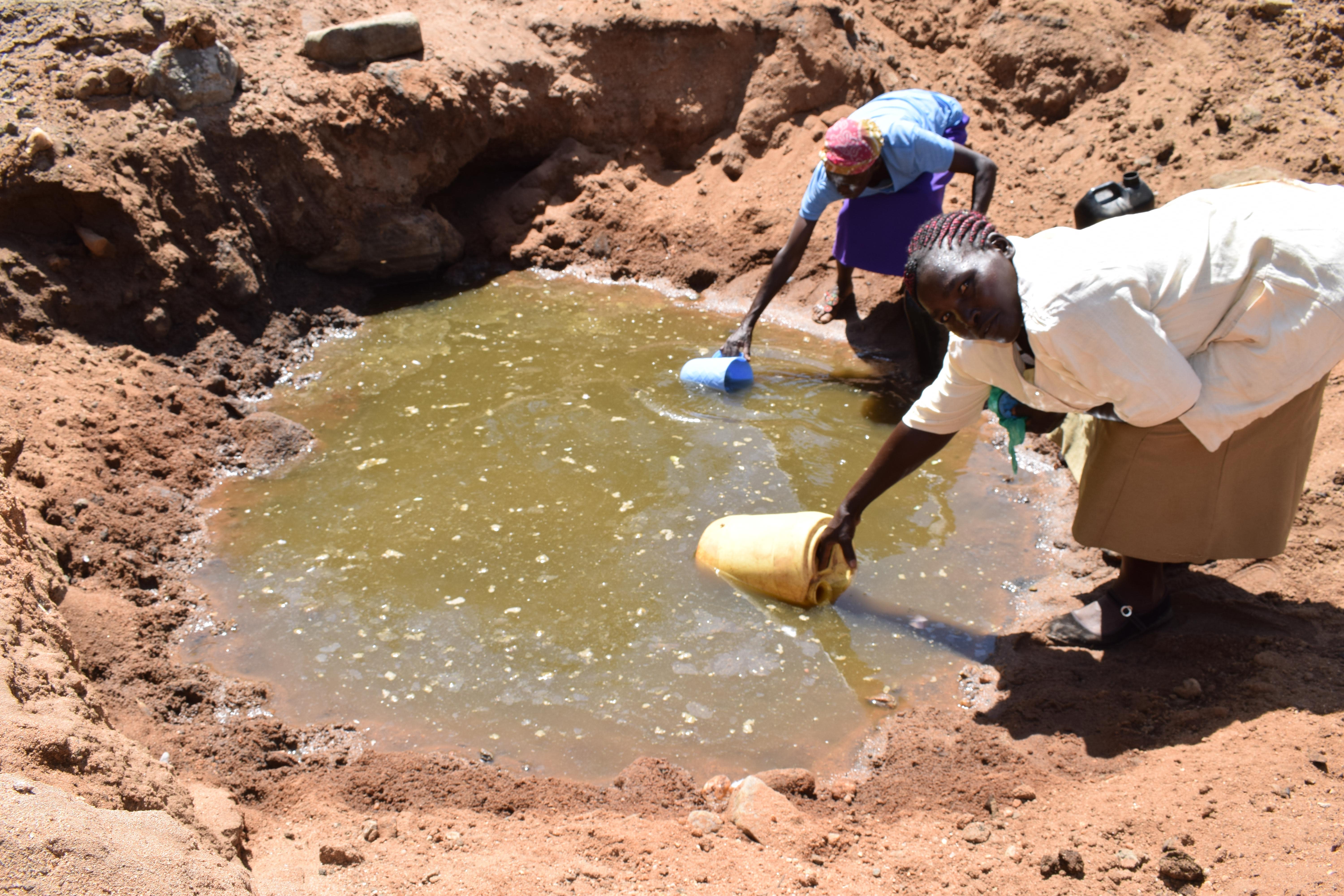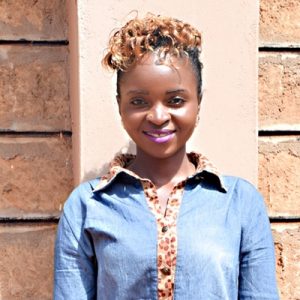A plastic water tank was installed at Kayamatula Primary School a few years ago but it is not big enough to ensure all students and staff have access to safe water during the school day.
Even with the rainwater harvesting tanks, students are tasked with bringing water to school each day to supplement the existing supply. Rainwater harvested after rains can only sustain the school population for two months (rain is seasonal in Southeastern Kenya) because the tank's capacity is not proportionate to school's water needs.
Students carry water from varied sources that are often open and contaminated, many of which look like this:

Rivers in this area often appear dry at first glance, but digging in the sand proves there's still a bit of water.
The school was started by Kyamatula community members in 1958 to provide an education center for children from the village, it was then taken up by Mwala District Education Board to operate as a government school. The school has been able to grow through the support of parents, government, and community organizations.
On an average day, students arrive by 6:30am to help clean the school grounds before starting class at 7am. Classes run until 4pm, with a lunch break around 1 when students often go home to eat.
The students are required to carry water to school on a daily basis, placing an extra burden beyond carrying their school bags. Sometimes students arrive at school tired, which leads to a poor concentration in class.
"Our school is not privileged to have a convenient clean water supply," Deputy Headteacher Mr. Chris Muthusi said.
"Students and teachers have been exposed to drinking water from unknown sources at times when water is supplied by parents and students."
The school has latrines for the students and teachers, but their condition is poor. The latrines were dirty with a bad smell engulfing the surrounding area. Some of them lacked doors. They are not clean due to the lack of water, which also prevents the school from having operational handwashing stations for people to use after going to the bathroom.
"Our levels of hygiene and sanitation here in school can be said to be average, even with the low water supply, we are working hard to make our standards favorable and conducive for good learning. Increased water supply will make things better for the school community," Mr. Muthusi said.
What we can do:
Training
Students and staff will be trained on hygiene and sanitation. Those in attendance will form a school health club that will promote good hygiene and sanitation practices both at school and at home. They will learn all the steps of proper handwashing, how to treat water, and how to keep their environment clean. The school will also be taught how to best oversee and maintain their new rainwater catchment tank and hand-washing stations.
Handwashing Stations
Three handwashing stations will be delivered at the project’s completion. These are 1,000-liter plastic tanks fitted with four taps. The health club and school management will be responsible for making sure tanks are filled with water and that a cleaning agent such as soap or ash is available.
Rainwater Catchment Tank
We will build a 104,000-liter rainwater catchment tank for this school. Its clean water will benefit the students, teachers, and supplementary staff. Parents will mobilize the materials needed for construction, such as sand and stone and also lend some strong arms to help with the actual construction.
As soon as the tank has time to cure, it can begin to collect rainwater for drinking, cooking, and cleaning! 104,000 liters of water will keep students and staff in class and focused on learning.
This project is a part of our shared program with Africa Sand Dam Foundation. Our team is pleased to provide the reports for this project (edited for clarity) thanks to the hard work of our friends in Kenya.

 Rainwater Catchment
Rainwater Catchment
 Rehabilitation Project
Rehabilitation Project

































